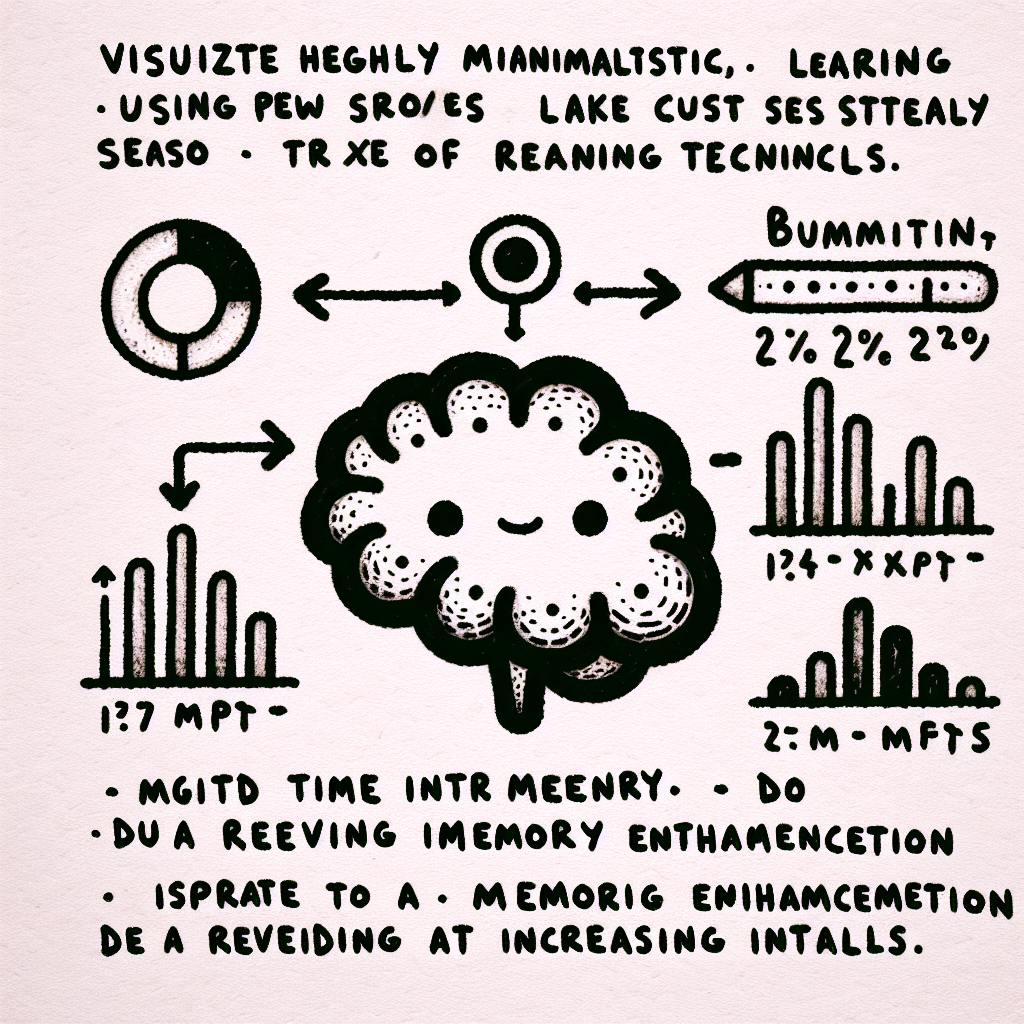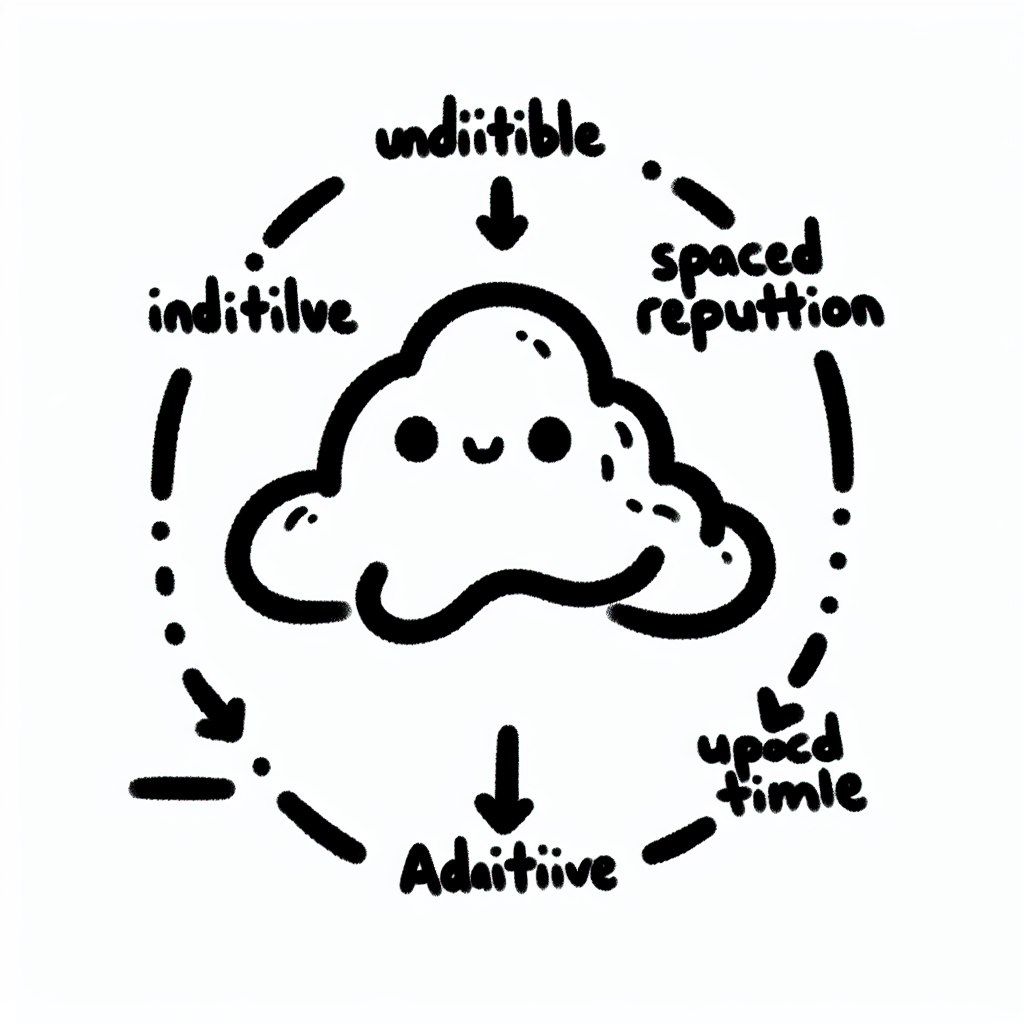Introduction to Spaced Repetition and Distributed Practice
What is Spaced Repetition?
Spaced repetition is a learning technique that involves reviewing information at increasing intervals over time. Rather than studying content all at once, learners return to the material periodically, which strengthens memory retention. This strategy is rooted in cognitive psychology, where researchers have long studied how memory functions and how forgetting can be minimized through structured review schedules.
The concept of spaced repetition dates back to the late 19th century, with early experiments by psychologist Hermann Ebbinghaus. He discovered the "forgetting curve," which shows how information is lost over time when there is no attempt to retain it. Spaced repetition counters this by reinforcing knowledge just as it is about to be forgotten.
Why Spacing Matters
Spaced repetition differs significantly from massed practice, commonly known as cramming. While cramming may offer short-term gains, it fails to support long-term retention. In contrast, spaced repetition allows the brain to consolidate memories more effectively through intervals between reviews.
Neurologically, this strategy leverages the brain’s natural consolidation process. When information is revisited over spaced intervals, it is more likely to be encoded into long-term memory. Each review session strengthens the neural pathways associated with that knowledge.
Studies across various age groups and academic disciplines consistently show that spaced repetition outperforms cramming in terms of both retention and understanding. For example, research summarized by Scientific American highlights the superiority of distributed practice over massed approaches for lasting learning outcomes.

Scientific Foundations of Spaced Repetition
Spaced repetition strategies are grounded in decades of cognitive science research. These methods leverage how the brain naturally learns and forgets, using timing to enhance memory retention.
Evidence Supporting Distributed Practice
Numerous studies have shown that distributing learning sessions over time significantly improves long-term retention across various subjects, including mathematics, languages, and sciences. This approach, known as distributed practice, benefits learners of all ages—from children to adults—by allowing time for information to consolidate between sessions. According to Scientific American, spacing out study sessions is one of the most effective learning techniques validated by scientific research.
Cognitive Mechanisms Behind Spacing
Spaced repetition strategies take advantage of key cognitive mechanisms. First, spreading out study sessions enhances memory encoding and strengthens retrieval pathways. The spacing effect, a phenomenon where information is more easily recalled when learning is spaced out, counters the natural forgetting curve. Furthermore, sleep plays a vital role in memory consolidation, allowing the brain to reinforce newly acquired knowledge between spaced sessions.
Synergy with Retrieval Practice
When spaced repetition strategies are combined with retrieval practice—actively recalling information rather than passively reviewing it—learning outcomes improve even further. This synergy strengthens memory by reinforcing neural pathways through repeated, effortful recall. As supported by research in Teaching the Science of Learning, this combination is one of the most effective ways to promote durable, transferable learning.

🛠️ Tools and Technologies for Spaced Repetition
Digital Tools
Spaced repetition strategies have become more accessible through digital tools designed to optimize memory retention. One of the most prominent is Anki, an open-source flashcard application that uses a proven spaced repetition algorithm. Studies have shown that Anki significantly improves academic performance, particularly in medical education (PMC Study on Anki).
Other platforms leveraging spaced repetition strategies include SuperMemo, which introduced the original spaced repetition algorithm; Quizlet, which offers customizable flashcards with built-in review features; RemNote, which combines note-taking with spaced repetition; and Brainscape, which adjusts card exposure based on confidence ratings.
Algorithms and Optimization
At the core of these tools are algorithms designed to calculate optimal review intervals. The Leitner system, for example, uses a tiered card-box approach to determine when material should be reviewed. More advanced models like ACT-R incorporate cognitive principles to simulate human memory decay and guide review timing.
Recent advancements apply machine learning to personalize spaced repetition strategies. Algorithms adapt to individual performance to optimize retention and minimize study time. Notable research, such as Unbounded Human Learning and Optimizing Human Learning, explores how these adaptive systems can enhance learning efficiency through predictive scheduling and data-driven feedback.

Implementing Spaced Repetition in Learning Environments
For Students
Students can take control of their learning by integrating spaced repetition strategies into their study habits. One effective method is to establish a study calendar that spaces review sessions at increasing intervals—starting with shorter gaps and gradually lengthening them as material is retained. This approach helps counteract forgetting and reinforces memory over time.
Digital flashcard applications like Anki or Quizlet offer built-in spaced repetition algorithms, automating the interval scheduling based on performance. These tools make it easier for students to manage large volumes of content while maximizing retention.
To further enhance learning, students can combine spaced repetition strategies with retrieval practice—actively recalling information from memory—and elaboration, which involves explaining concepts in their own words or connecting new information to what they already know.
For Educators
Educators can enhance instructional effectiveness by embedding spaced repetition strategies into curriculum design. One approach is the spiral curriculum, where key concepts are revisited at increasing levels of complexity over time. This ensures that students repeatedly engage with core ideas, reinforcing their understanding.
Scheduled review sessions distributed throughout the academic term help maintain retention. Instead of isolating review to pre-exam periods, regular reinforcement solidifies learning.
In classroom settings, low-stakes quizzes administered at intervals throughout a unit serve as effective retrieval tools. These assessments promote long-term retention without the pressure of high-stakes testing. Additionally, peer instruction and collaborative recall exercises encourage students to reinforce their understanding by explaining concepts to others.
Case Studies and Applications
Spaced repetition strategies have shown measurable success in various fields. In medical education, the use of Anki has become widespread for preparing for board exams. Its algorithmic scheduling promotes efficient memorization of vast amounts of content, leading to improved exam performance.
In language learning, programs like SuperMemo have helped learners retain vocabulary over longer periods by systematically spacing reviews. This method has proven especially useful for mastering large lexicons in new languages.
STEM education also benefits from spaced repetition. Assigning spaced homework that revisits previous concepts strengthens foundational knowledge and prepares students for cumulative learning. This method helps learners build durable understanding in subjects like mathematics and physics.

🧮 Optimizing Spaced Repetition Schedules
The Science of Scheduling
Effective spaced repetition strategies rely on carefully timed review intervals. The goal is to review information just before it's likely to be forgotten—optimizing the balance between memory decay and reinforcement. This means intervals must grow progressively longer as the learner demonstrates retention, but not so long that forgetting outpaces recall.
Adaptive scheduling plays a crucial role in fine-tuning this balance. By analyzing a learner's performance—such as recall accuracy and response time—spaced repetition systems can adjust intervals dynamically. This personalization helps ensure that each learner gets review sessions that match their individual retention curve.
Computational Models
Modern spaced repetition strategies increasingly leverage computational models to enhance scheduling. Algorithms such as the ones discussed in Optimizing Human Learning use data-driven methods to estimate a learner’s forgetting rate and adjust review timing accordingly. These models aim to minimize unnecessary repetitions while maximizing long-term retention.
Predictive modeling also plays a role in optimizing memory retention. As outlined in Unbounded Human Learning, these models forecast when a learner is most likely to forget an item, enabling systems to schedule reviews at the most effective times. This approach supports more efficient learning and better outcomes over time.

Best Practices and Strategy Tips
Designing Effective Spaced Repetition Plans
To implement effective spaced repetition strategies, begin early in your learning process. Starting early gives your brain time to consolidate information over multiple sessions. Spaced repetition works best when reviews are distributed across increasing intervals, so frequent reviews in the early stages are essential.
Focus on material that is unfamiliar or especially challenging. Prioritizing harder concepts ensures that your study time is used efficiently, reinforcing areas where forgetting is more likely.
Avoid the temptation to cram. Cramming may lead to short-term retention, but it undermines the benefits of the spacing effect—an evidence-based phenomenon where information is more easily recalled when learning sessions are spaced over time.
Enhancing Retention with Complementary Techniques
To boost the effectiveness of spaced repetition strategies, integrate complementary learning techniques:
- Interleaving involves mixing different topics or types of problems in one study session. This approach improves discrimination between concepts and strengthens long-term learning.
- Elaboration helps deepen understanding by explaining ideas in your own words or connecting them to prior knowledge. This added context makes it easier to retrieve information later.
- Dual coding pairs verbal information with images or diagrams. When learners engage both visual and verbal processing systems, they create multiple pathways for recall.
Combining these techniques with spaced repetition strategies leads to more robust and durable learning outcomes.

Future Directions in Spaced Repetition
AI and Personalization
As technology advances, artificial intelligence is playing a growing role in enhancing spaced repetition strategies. Intelligent tutoring systems can now adapt in real-time to a learner's performance, adjusting review intervals and content difficulty based on individual progress. These systems use machine learning algorithms to identify patterns in recall and retention, allowing for more efficient knowledge reinforcement.
Predictive analytics is another promising development. By analyzing historical learning data, these tools can forecast when a learner is likely to forget a concept and prompt review at optimal intervals. This data-driven approach ensures that spaced repetition strategies remain both effective and personalized to each learner’s needs.
Educational Policy and Institutional Adoption
There is increasing interest in incorporating spaced repetition strategies into broader educational policy. Schools and universities are beginning to recognize the value of evidence-based learning techniques grounded in cognitive science. Integrating these strategies into curricula can improve long-term retention and academic outcomes.
To support this shift, teacher training programs are gradually including cognitive science principles, such as the spacing effect, in their coursework. Equipping educators with this knowledge enables them to implement spaced repetition strategies effectively in classroom settings. As institutional support grows, these practices may become a standard component of modern education systems.

Conclusion
Spaced repetition strategies offer a powerful, research-backed method for improving long-term memory retention. This technique has demonstrated effectiveness across a wide range of learners, subjects, and educational contexts. From language acquisition to medical studies, the adaptability of spaced repetition makes it a valuable tool for anyone seeking to optimize their learning process.
Modern tools like Anki and other algorithm-based systems further enhance the application of spaced repetition strategies. These tools adjust review schedules based on individual performance, making the learning process more efficient and personalized.
With thoughtful implementation, spaced repetition strategies have the potential to fundamentally change how we acquire and retain information. They provide learners and educators with a scalable, efficient approach to mastering knowledge that lasts a lifetime.














